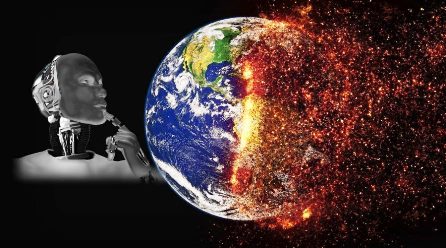The Biosphere Reserves as Observatories for Climate Change Adaptation in Southern Africa (Be-Resilient), for example, uses AI to predict flooding patterns in Mozambique.
Artificial intelligence (AI) can make substantial contributions to climate-resilient and low-emissions development. UN Climate Change’s Initiative on Artificial Intelligence for Climate Action (#AI4ClimateAction) explores the role of AI as a powerful tool for advancing and scaling up transformative climate action in developing countries.
RELATED: U.S. Department of State and AfriLabs partner to address climate crisis and foster entrepreneurship
In line with the call by UN Secretary-General António Guterres to develop AI that is “reliable and safe” and that can “supercharge climate action” to propel us towards achieving the Sustainable Development Goals, the #AI4ClimateAction Initiative aims to deliver concrete and transformative results, both on policy and implementation, under the first joint work programme of UN Climate Change’s Technology Mechanism.
Some AI-powered solutions for climate action in developing countries, including least developed countries (LDCs) and Small Island Developing States (SIDS), are already underway:
- Innovative adaptation technologies such as AI-powered models can provide early warning systems to alert communities about impending disasters. The Biosphere Reserves as Observatories for Climate Change Adaptation in Southern Africa (Be-Resilient), for example, uses AI to predict flooding patterns in Mozambique.
- Agri-food systems and crop management can be optimized with AI predicting the best planting times, assessing soil health and monitoring pest and disease outbreaks. AI-driven precision agriculture can also reduce water usage, promote sustainable farming practices and boost food production. The Intergovernmental Authority on Development (IGAD), for instance, is using AI to enhance impact-based forecasting by the Climate Prediction and Applications Centre in East Africa’s agriculture sectors, which is key for food security, livelihoods and economic development.
- Renewable energy systems’ efficiency and reliability can be improved by AI algorithms that predict energy demand, optimize grid operations and integrate renewable energy sources seamlessly, reducing greenhouse gas emissions and promoting a shift toward low-emission energy solutions. One example is the Global Renewables Watch, a live atlas intended to map and measure utility-scale solar and wind installations using AI and satellite imagery, allowing users to evaluate clean energy transition progress and to track trends over time.
To inform the work of the #AI4ClimateAction Initiative, the UN Climate Change Technology Executive Committee (TEC) is convening national climate technology focal points and representatives from civil society, academia and the private sector for consultations during the Regional Climate Weeks.
During Africa Climate Week (ACW) in Kenya, innovative examples of AI-powered solutions were highlighted: from climate-resilient supply-chains and clean energy solutions for rural women to disaster risk reduction initiatives across the continent.
Key considerations emerging from ACW included the need to ensure the ethical use of AI and the development of regulatory frameworks. Promoting stakeholder engagement and participatory processes, strengthening developing countries’ technical and institutional capacities, and promoting demand-driven, fit-for-purpose and inclusive AI-powered tools were among other issues also discussed. The next regional consultation will take place during the Asia-Pacific Climate Week in Malaysia.
The road to COP28 and beyond
The TEC will convene a high-level event on AI for climate action at COP28, in collaboration with the Climate Technology Centre and Network (CTCN) and the incoming COP Presidency. It is also preparing to launch – together with Enterprise Neurosystem – the AI Innovation Grand Challenge: a climate technology and innovation competition to drive new AI applications for climate mitigation and adaptation action in developing countries.






























